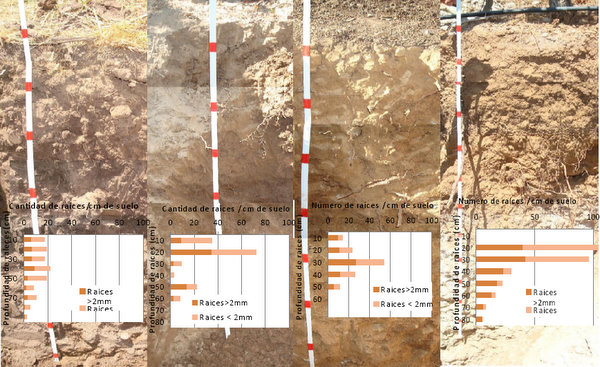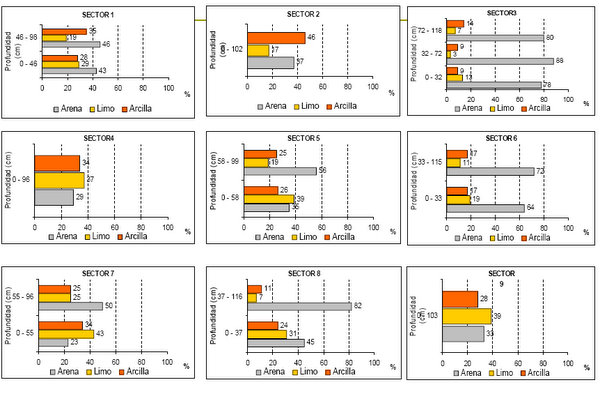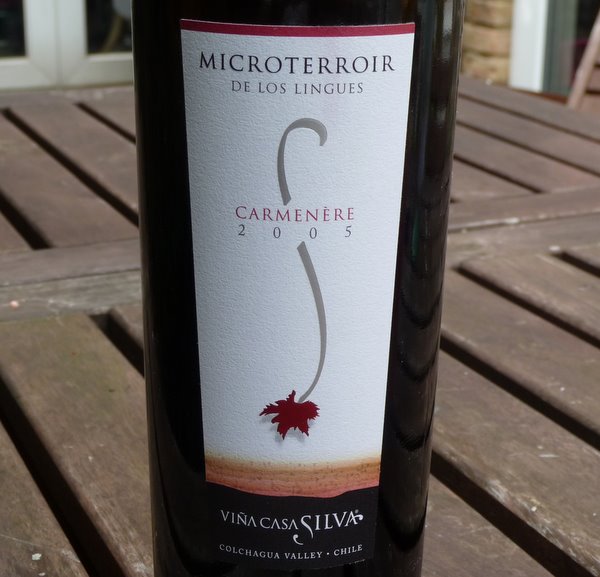|
Grappling
with the science of terroir
Viña
Casa Silva’s microterroir project

Soil profile descriptions
Chilean
producer Viña Casa Silva is currently involved with a research
project on terroir, in conjunction with Professor Yerko Moreno at the
University of Talca. Their goal has been to identify small terroir
units, which they have dubbed ‘microterroirs’, in their properties
in the Colchagua Valley that are best suited to specific grape
varieties.

Professor Yerko Moreno of the
University of Talca
This
project considers several different aspects of terroir, including
climatic variables, soil properties, plant characteristics and also
viticultural management strategies, with a view to uncovering special
sites for Carmenère, Cabernet Sauvignon, Cabernet Sauvignon, Petit
Verdot, Syrah and Viognier. In the past, educated guesswork based on
weather data and soil profiles would have been the only way to decide
which varieties to plant where. The problem with this approach is that
each trial planting takes a number of years before any results are
known, and replanting or grafting over to a different variety is an
expensive process. With good scientific understanding of terroir
characteristics, informed decisions can be made, shortening the time
frame until and ideal match between site and variety is made. This
sort of study also helps inform producers about the right management
techniques to use with different varieties and soil types in order to
get best results.
A
‘microterroir’ is defined as ‘a small sector (0.1–0.5
hectares) of a base terroir with special features of soil and plant
growth, which when combined with viticultural management gives a wine
of unique value.’
Casa
Silva presented the example of their Los Lingues vineyard, where they
have undertaken a range of studies, generating a significant volume of
data which they have then tried to make sense of.

Soil characteristics of selected Carmenere plots
What
is the best methodology for collecting data on natural variation
within a vineyard? One way might be to sample randomly throughout the
vineyard and then look at the pattern of variation that is revealed. A
more sophisticated method would be to do a coarse sampling, and then
let these initial data points guide where subsequent samples should be
taken from. This approach takes account of the fact that some portions
of the vineyard will be more variable than others, and thus need more
closely spaced data points to build up an accurate picture of the
pattern of variation.
A
third, and perhaps more effective strategy is to use precision
viticulture approaches to split a large vineyard up into homogeneous
management blocks which can then be studied in isolation and compared.
Aerial imaging during the growing season, coupled with statistical
analysis of the data that result, enable growers to see the pattern of
natural variation reflected in vine vigour. Then it’s possible to
split the vineyard up into management zones on the basis of what are
presumably differences in terroir.
Casa
Silva began by doing a series of detailed soil studies in which they
generated soil profile descriptions that included measures such as
sand content per soil horizon and water accumulation capacity.
Then
they turned their attention to the plants, looking at factors such as
canopy density, bunch (cluster) sun exposure level, evolution of berry
temperature over 24 hours and pruning weights.
They
have also looked at different responses to water stress, examining
spatiotemporal variability of hydric potential across plots.
This
was followed by commercial small lot winemaking of reds from different
microterroirs in 500 litre French oak barrels. In the resulting wine,
variables such as anthocyanin profiles, tartaric/malic acid and
sensory wine descriptors were recorded.
This
work generated a large volume of data which need to be made sense of
through statistical analysis. For example, it is possible to look at
how factors such as water deficit affect the wine style of each grape
variety. Also, one of the big questions concerns year-to-year
variability. ‘Terroir’ features, if they are to be useful in
management decisions, need to be relatively stable across vintages.
Conclusions
Initial
conclusions from the study are interesting. The statistical analysis
showed that wine composition variability is dependent on the following
factors, and to the following degree:
The
most important individual factors were:
-
January
average temperature
-
Average
temperature in the last month of maturity
-
Seasonal
rain in spring
-
Root
exploration depth
-
Soil
volumetric moisture content
The
best Carmenère is achieved in the blocks where the roots have to go
deeper (at least 1 m) to get a water supply.
For
Cabernet Sauvignon, vegetative equilibrium is critical. Shoots shorter
than 80 cm lead to dry tannins; those longer than 130 cm lead to green
characters and hard tannins.
The
stage at which canopy growth ceases affects fruit composition
significantly. Active canopy is needed until quite late in the season.
These
initial results show the potential value to producers of studies such
as this. For Casa Silva, these complex research results have enabled
them to produce a blueprint of the optimum elements required for a
microterroir plot to produce top quality Carmenère, Cabernet
Sauvignon, Syrah, Viognier or Petit Verdot. It has led to them
reviewing some of their current management practices such as late
irrigation and nitrogen nutrition.
The blueprint has enabled them to re-map their
vineyards and regraft those vines that were underperforming.
Winemaker Mario Geisse says, ‘The improvement in quality is
already clear in the most recent vintages of our top wines and will
become increasingly evident in the next few years.’

Viña Casa Silva Microterroir de los Lingues Carmenère
2005 Colchagua, Chile
14.5% alcohol. Deep coloured and dense, this has a classic Carmenère
nose of brooding, sweet red fruit pastille and blackberry fruit with a
spicy, chalky dimension. The palate is concentrated, smooth and quite
lush with an appealing, smooth grainy tannic structure. Like many
serious Carmenères it is very ripe and full, but is far from jammy,
with grainy, chalky, spicy notes keeping the fruit really well
defined. There’s a hint of dark chocolate, too, but the emphasis
here is really on the bold fruit. 92/100 (UK retail c. £25)
See
also: my series on
Chilean wine
Wine tasted as 09/09
Find
these wines with wine-searcher.com
Back to top
|

